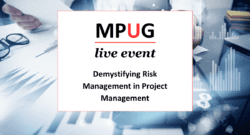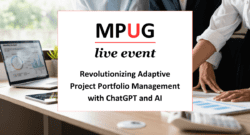Risk Management
Our archive page dedicated to risk management training offers a wide range of resources and materials for individuals looking to improve their skills in this critical area of project management. On this page, you will find articles and blog posts on risk management best practices, as well as webinars and videos that provide in-depth training on risk management techniques. We also have links to online courses and workshops that can help you gain a deeper understanding of risk management and how to apply it in your own projects. Additionally, our page includes case studies and examples of successful risk management in action, so you can see how these techniques have been applied in real-world situations. Finally, we provide information on how to become certified in risk management and links to professional organizations that offer training and certification in this area. Visit our archive page today and start building your expertise in risk management.
Revolutionizing Adaptive Project Portfolio Management with ChatGPT and AI
Explore how cutting-edge AI technologies like ChatGPT are revolutionizing adaptive project portfolio management, enhancing prioritization, resource optimization, data integrity, and strategic decision...
Demystifying Risk Management in Project Management
Master risk management strategies to prevent project derailment and earn 1 PMI PDU in this practical webinar led by industry expert M. Quigley.
Revolutionizing Adaptive Project Portfolio Management with ChatGPT and AI
Explore how cutting-edge AI technologies like ChatGPT are revolutionizing adaptive project portfolio management, enhancing prioritization, resource optimization, data integrity, and strategic decision...
Reducing Risks & Boosting Quality with External Evaluations
Learn the importance of external examination by independent testing experts to find defects and ensure quality in software and hardware products.
5 Ways AI is Already Transforming Project Management (and How You Can Get Started)
Learn key areas where AI is transforming project management and get simple ways to reduce overwhelm as you get started with AI.
Black Swan Insights: Fortifying Projects with Force Majeure Strategies
Discover the pivotal role of Force Majeure clauses in project management for navigating unpredictable circumstances effectively.
Identify and Respond to Black Swans
Discover proactive strategies, 10 key steps for identification, and actionable measures to fortify projects against unforeseen challenges.
Consistency Gives Self-Discipline Its Power
Explore the vital role of discipline and consistency in project management, and how these core values drive success.
Do We Need Risk Management in Agile Projects?
Explore the necessity of risk management in agile projects, how it differs from traditional approaches, and why it's still necessary.










